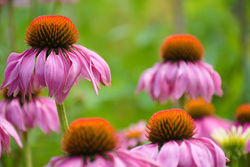Best insect hotels for your garden
- Lars Wildes

- Feb 7, 2023
- 3 min read
Have you heard about bug hotels? They're these cute, little artificial homes for insects that serve as their long-term stay or winter hibernation spot.
You can hang them from trees, attach them to fences, or stick them into the ground near your flower beds or vegetable garden. We have one hanging in our tree right now.
Not only is it a great way to help out these helpful insects, but it also promotes a healthy ecosystem through pollination and natural pest control. Plus, the insects feed local birds that stop by your garden, too.
Some insects like to snuggle up in hollow plant stocks, while others prefer dry, dead wood and bark. The best place to put a bug hotel depends on the type of insect, with some loving full sun and others preferring shady spots.
Here are a few of our favorite bug hotels, ready to hang in your garden and host all sorts of insect parties.
Wall-hanging bug hotels

Holes in old logs and stumps

Insect hotel with mixed materials

Homemade bug hotel with feathers, bark and pinecones

Large-scale insect palace


Clean and tidy bug hotel with wire and holes

Bug hotel with bricks, sticks and pinecones

Insect hotel hiding in a shady corner of the garden

Insect hotel for the high fliers

Bug hotel with reeds, clay pots and more

What you need to make a bug hotel
Making a bug hotel is an educational and fun activity for kids because it teaches them about the importance of nature and the role of debris and natural materials in providing shelter for insects and other small creatures.
A structure: old wooden box, old flower pots, hollowed-out tree stumps, bricks, and planks, or wooden pallets
Natural materials: dried leaves, sticks, pottery, pine cones, old bits of wood, stones, roofing felt strip, straw, bamboo canes, moss, pieces of bark, old logs, and anything else found
How to make the best insect hotel
Choose the structure for the bug hotel, using old materials found in the garden.
Use different materials for different parts of the bug hotel to provide shelter for different types of insects.
Pack in as much of the natural materials as possible, like sticks, leaves, pine cones, pottery, etc into your structure.
Place the bug hotel in a sunny and partially shaded spot in the garden.
Wait and see who stops by — centipedes, millipedes, snails, ants, woodlice, and other insects… maybe even a hedgehog
Before you buy a bug hotel
Before you run out and buy (or build) your own insect hotel, it’s important to think about what type of insect you want to attract and if they actually need a ‘bug hotel’ at all.
THE ENTOMOLOGIST LOUNGE does a fantastic job of explaining why insect hotels might be more of a fad than an actual necessity. And they explain how to take care of insect hotels at the end of the season in their complete guide here.
It’s 100% worth a read before you go out and turn your backyard into an insect haven.
Turn your entire garden into an insect hotel
The bug hotel ideas that we shared above are great… and they can work. But if you really want to do your part for the planet, focus on planting flowers and plants that pollinators need.
From bees and butterflies to birds and ladybugs, the perennials you grow in your borders, gardens, and yards are way more important than any off-the-shelf bug hotel.
Check out the list of the best plants that pollinators love here. And see what types of insects you can expect to come spend the season at your place.













Comments